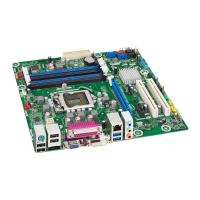
Do you have a question about the Intel DQ77CP and is the answer not in the manual?
| Form Factor | Micro ATX |
|---|---|
| Socket Type | LGA 1155 |
| Memory Slots | 4 |
| Maximum Memory | 32 GB |
| Memory Type | DDR3 |
| SATA 6Gb/s | 2 |
| SATA 3Gb/s | 4 |
| mSATA | 1 |
| Chipset | Intel Q77 Express |
| Memory Types | DDR3 |
| Audio | Realtek ALC892 |
| LAN | Intel 82579LM Gigabit Ethernet |
| Expansion Slots | 1 x PCIe 3.0 x16 |
| Video Output | DisplayPort, DVI-D |
| USB Ports | 10 (4 USB 3.0, 6 USB 2.0) |
Information on current characterized errata for the board.
Identifies the target audience for this technical product specification.
Explains the conventions used for symbols and abbreviations in the document.
Highlights important information, cautions, and warnings for safe operation.
Provides a general overview of the Intel Desktop Board DQ77CP features and capabilities.
Shows the location of major components on the Intel Desktop Board DQ77CP.
Illustrates the major functional areas and connections of the desktop board.
Provides links to Intel's website for support and product information.
Details the processor compatibility, power, and graphics capabilities.
Describes the supported memory configurations and organizations.
Details the Intel Q77 Express Chipset and its interfaces.
Details hardware monitoring, fan control, and chassis intrusion detection.
Covers Intel vPro, AMT, Virtualization, TXT, IPT, and Anti-Theft technologies.
Explains power management features including ACPI, system states, and wake-up capabilities.
Describes the system memory, including addressable memory and memory map.
Describes the board's connectors and headers, categorized by location.
Explains the location and settings of the BIOS Setup configuration jumper block.
Details how to reset Intel ME configuration and password using the MEBX header.
Discusses electrical parameters, power supply, and fan header capabilities.
Discusses thermal limits, airflow requirements, and safety precautions for system operation.
Introduces the Intel BIOS, its storage, update process, and setup access.
Explains legacy USB support for using USB devices before OS drivers are available.
Details utilities for updating the BIOS in Windows or DOS environments.
Details acceptable media types for recovering a damaged BIOS.
Details boot device selection options available in the BIOS Setup.
Details BIOS security features including supervisor and user passwords.
Lists BIOS beep codes, patterns, and frequencies for error reporting.
Lists common BIOS error messages and their explanations.
Explains POST codes generated by the BIOS to diagnose errors during startup.
Outlines the regulatory compliance information for the Intel Desktop Board DQ77CP.
Declares conformity with EU directives for CE marking, EMC, LVD, and RoHS.
Lists EMC regulations and FCC Declaration of Conformity for the board.
Provides warnings and instructions for safe battery replacement and disposal.
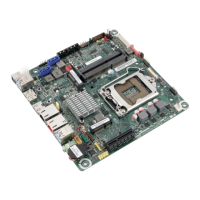
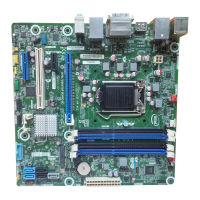

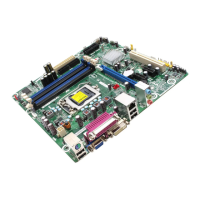

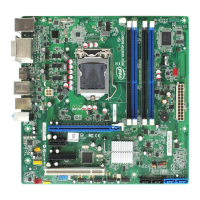
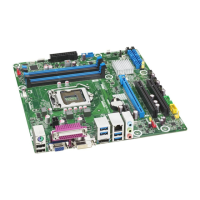




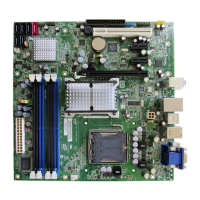
